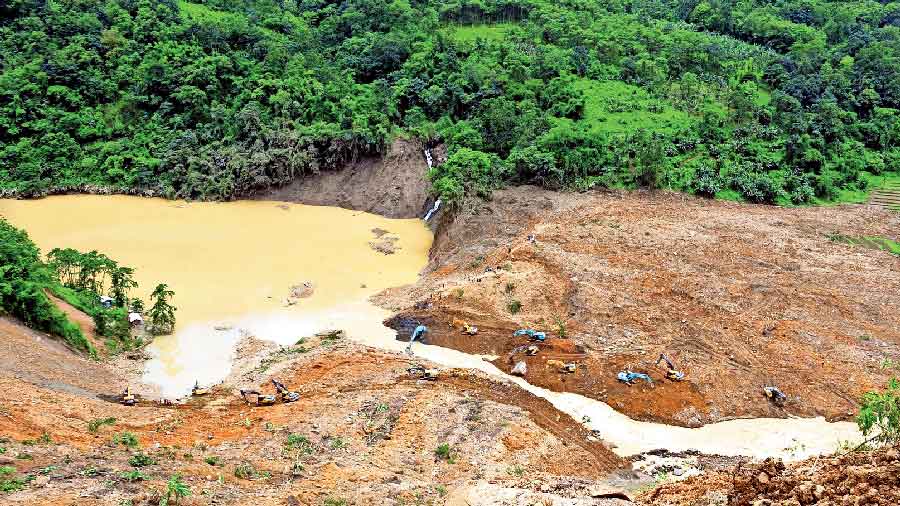The death toll from Thursday’s landslide in Manipur’s Noney district has risen to 20 with the recovery of 12 more bodies. Around 43 people are still missing, 16 of them from Assam.
Fifteen of the dead were Territorial Army personnel deployed for the security of railway staff and construction workers at the under-construction Tupul railway station yard, which was hit by the landslide around 2am on Thursday. A portion of a hillock overlooking the yard gave away owing to heavy, continuous rain over the past few days.
“Eighteen people have been rescued and around 43 are still trapped,” Noney deputy commissioner H. Guite told The Telegraph.
“Rescue operations are on in full swing but the poor weather and the depth and location of digging (for rescue) are posing a challenge.”
Three railway employees are among those missing. Advanced sensors have been deployed to detect survivors and bodies.
The army said 13 Territorial Army personnel and five civilians had been rescued. Of the 81 people present at the site when the landslide struck, 43 were Territorial Army personnel, of whom 15 are still missing.
Work on the project has been on for five years. The Territorial Army was deployed at the site two-and-a-half months ago.
Daichuipou, a student leader participating in the rescue operations, said this was the “biggest natural disaster” to have hit Manipur.
“We need to look into other causes, if any, apart from the rainfall. A lot of deforestation has taken place for the railway project,” he told this newspaper.
Several northeastern states have been receiving heavy rain that has triggered floods and landslides, disrupting life and snapping communications, especially in Assam, Arunachal Pradesh and Meghalaya.
At least 173 people have died in the Assam floods since April 6, of whom 131 have died since June 14. Landslides and floods in Assam's Dima Hasao district in May have cut off rail communication with southern Assam, Manipur, Tripura and Mizoram.
Manipur chief minister N. Biren Singh, who visited the site of landslide for the second consecutive day, tweeted: “Heavy machineries along with ‘Through Wall Imaging Radar’ have also been deployed to expedite the (rescue) operation.” The radar can detect and locate stationary and moving objects, including humans, behind walls.











